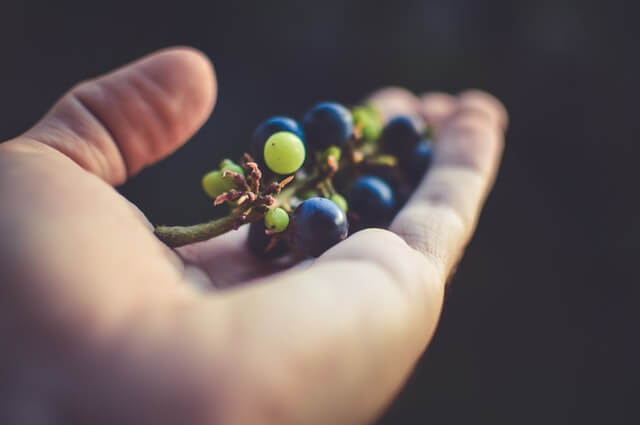For many people, a glass of sweet wine at the end of a long and satisfying meal is the ultimate treat.
Canadians have long had a hate for sweeter wine because of the sickly sweet wines that dominated our market in the ’70s and ’80s. Many of these wines had sugar added to try to appeal to an unsophisticated market and were cloying because of their lack of acidity.
However, a quality sweet wine, where the sugar level is achieved naturally and balanced by high levels of mouthwatering acidity are some of the most sublime and sought-after in the world. Wines such as Sauternes, Tokaji Aszu and Vin Santo have been produced for hundreds of years, but many people continue to reject these wine types.
In recent years wine lovers have begun to give bottles of sweet wine more attention, as they have discovered the brilliance and versatility of a great sweet wine.
A Beginner’s Guide To Sweet Wine: What Is It?
Sweet wines are any type of wine that has a significant and noticeable level of sweetness. The best way to measure the sweetness of the wine (other than tasting it, of course) is to look at the residual sugar concentration.
Most dry wines are under about 10 grams per litre of residual sugar (1%). Off-dry wines may have more noticeable levels of sweetness but will still not be considered “sweet”. They may have between 10 and 30 grams per litre of residual sugar (1% to 3%).
Anything over this is considered “sweet”, but even sweet wine types can vary in their sweetness levels. Depending on how ripe and concentrated the grapes are, these wines can have up to 500 grams of residual sugar per litre.
Different Ways of Making Sweet Wines
There are a number of ways to make sweet wine. It all depends on the region, the grape, and the process of winemaking that’s traditional to that area.
Quality sweet wines are made by ensuring that not all of the sugar in the grapes is fermented into alcohol. These always start out with extra sweet grapes, but there are different ways of ensuring that grapes have a high level of sugar in them. Here are some of the most popular ways to make this wine type.
Late Harvest
The easiest way to make a sweet wine is by picking grapes a little later in the harvest period. The longer the grapes are on the vine, the sweeter and more concentrated they become. Certain categories of German wines, such as Spaetlese and Auslese are made from late-harvested grapes.
As grapes are hanging on the vine, and especially when there are humid conditions, they may be infected with a fungus called Botrytis Cinerea. This is a type of rot that can ruin the berries. However, when humid conditions alternate with drier spells, a beneficial or “noble rot” can develop.
Grapes so infected have sugars concentrated and also develop notes of honey, beeswax and ginger, which can make the resulting wines especially complex and interesting. Sauternes and Tokaji Aszu are two wines produced this way. They are quite expensive because picking needs to be done berry by berry to include only those grapes affected by noble rot.
Drying
Another way that vintners increase sweetness in their grapes is to intentionally dry them. Drying grapes concentrates the natural sugars and also concentrates acidity to ensure that the sweeter wines are balanced in the mouth. The grapes can be dried on the vine or picked ripe and hung or laid out in the sun to dry.
This is the method that’s been traditionally used to make wines like Recioto and Vin Santo.
Fortification
Fortification is a common way to make many sweet wines. It was originally developed as a way to make the wine last longer without spoiling. Fortification involves adding alcohol to a fermenting wine. The addition of alcohol kills the yeast responsible for fermentation and ensures that a certain amount of sugar is retained.
The most popular fortified wines are Port, Sherry, and Madeira.
Freezing
Here in Canada, we take advantage of our natural climate by freezing grapes on the vine. At minus 8 degrees Celsius, most of the water in the grape is frozen, but water with high amounts of sugar has a lower freezing point and does not freeze at this temperature.
When the grapes are pressed the liquid that comes out is very sweet and concentrated. This liquid is fermented and when fermentation stops naturally, the wine has a high level of residual sugar. This is ice wine.
Although ice wine originated in Germany, it was a rare occurrence, once that is becoming even more rare with climate change. The Niagara Region has a climate that can regular produce ice wine every year and is the largest ice wine producer in the world.
Buying Sweet Wine Online In Ontario
If you’re looking to explore unique sweet wines, online browsing is a good place to start. It will give you a sense of the history of the wine, as well as the producers responsible for its creation. Having this information at your fingertips will help you make the best choices when it comes to your wine purchase.
At Small Winemakers, we’re passionate about bringing you the best wines from around the world. You can shop by grape variety or wine type. Once you’ve chosen a few of your favourites, we deliver them straight to your door.
No hauling cases of wine in and out of your car, or wandering around a store lost and confused. Our expert staff are always available to help you pick the best wine for your taste and budget.

